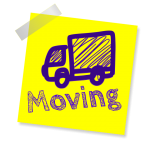
Navigating the Visa Landscape
As you embark on the journey to relocate to the United States, one of the first critical steps is to navigate the diverse U.S. visa landscape. Understanding the array of visa categories is pivotal, as each caters to specific needs and circumstances. From work visas like H-1B, which is designed for skilled workers, to family-sponsored visas such as the F-2A, intended for family reunification, this guide serves as your compass in unraveling the complexity of eligibility criteria, application processes, and key considerations. Armed with this knowledge, you can confidently select the visa that aligns seamlessly with your unique circumstances, ensuring a solid foundation for your move.
The range of U.S. visa categories reflects the diversity of circumstances under which people seek to gain entry to the country, whether for work, study, investment, or family reasons. Sifting through the options can seem daunting at first. This guide breaks down the major visa categories in clear detail, spelling out eligibility factors, documentary requirements, processing protocols, costs, work and residency privileges to expect, and necessary renewals. With this comprehensive background, you can systematically evaluate categories in relation to your personal situation and intentions for relocating. Perhaps H-1B fits if transferring within a multinational company, while O-1 suits those with extraordinary professional abilities. Or if reuniting with family, F-2A or F-2B addresses permanent versus temporary entry needs respectively. Clarifying these nuances ensures applying for the category optimized for you.
The Application Process Demystified
Once the suitable visa category is identified, the next phase involves navigating the application process. The thought of maneuvering through the requisite forms, documentation, and submission protocols may seem daunting, but fear not. This segment of the guide breaks down the process into easily digestible steps, offering practical insights and tips to streamline your application. Whether it’s assembling supporting documents, staying informed about processing times, or understanding interview requirements, this section ensures you approach the paperwork with efficiency and accuracy, minimizing potential hurdles in the application process.
The application process differs slightly across visa categories, but generally includes forms to establish eligibility such as personal history, biometrics, medical checks, and interviews. Compiling documentation like transcripts, bank statements, and sponsorship letters requires advance preparation but bolsters the application. Checking processing times on the State Department’s visa bulletin allows you to anticipate next steps. Attending the visa interview ready to elaborate on your ties to your native country, intentions for U.S. residency, and relevant qualifications ensures you present your best case. Whenever possible, use online accounts to track the status. While each stage necessitates preparation, this guide breaks application procedures into palatable checklists so you know what to expect. We further equip you with savvy filing tips, document templates and technical guidance like clarifying photo specifications to avoid simple mistakes upfront. Arm yourself with the process demystified!
Understanding Administrative Procedures
Beyond the intricacies of visas, numerous administrative procedures await your attention upon arrival in the U.S. Acquiring a Social Security Number, comprehending healthcare obligations, and initiating a bank account are just a few examples of essential tasks. While the U.S. healthcare system and financial landscape may initially appear intricate, this guide demystifies these administrative tasks, allowing you to navigate them with ease. Understanding the practical aspects of daily life ensures a smoother transition and helps you focus on settling into your new environment.
Navigating healthcare plans, insurance terminology, coverage networks and portability considerations takes guidance. This manual explains offerings at different employers and walks through plan selection checklists matching your circumstances. It breaks down common health services budgets and deductibles to expect. A primer on the U.S tax code clarifies filing requirements and strategies maximizing returns. You’ll learn key regulations around securing U.S. bank accounts, guidance choosing checking and savings products, and principles central to maintaining robust credit to access loans someday. Whether resolving payroll withholding amounts or deciphering cell phone family plans, the administrative chapter furnishes the basics you’ll encounter. With these duties demystified, you can reroute focus toward flourishing professionally and personally.
Cultural Nuances and Local Tips
Relocating is not just about paperwork; it’s a journey of cultural immersion. This portion of the guide delves into cultural nuances, local customs, and practical tips for assimilation. Whether it’s understanding the tipping culture, embracing local traditions, or navigating public transportation, these insights offer a deeper understanding of the new environment. This cultural preparation is invaluable, fostering a sense of connection and making you feel at home in your new surroundings.
Moving beyond etiquette, daily lifestyle sections get granular on aspects like common grocery items and staple ingredients used in American cooking you’ll want to become acquainted with. You’ll grasp the rotational timing of fashion trends and seasonal apparel here. We explain the role sports play socially, clarifying popular leagues and community team affiliations you may newly participate in. Other areas detail choosing childcare services, gaining driving proficiency, and modern dating norms to demystify common points of culture shock. Retail practice comparisons assist smart shopping. Reference maps guide neighborhood personality, livability and typical commuting times across metro areas. Through this tapestry of cultural and lifestyle wisdom, prepare to feel well-oriented in your new community.
Overcoming Common Challenges

No relocation journey is without its challenges. Homesickness, adapting to a new work environment, and cultural adjustments are common hurdles many face. This section addresses these challenges head-on, providing practical advice on overcoming them. By anticipating potential issues and understanding that the adjustment period is a natural part of the process, you’ll be better equipped to navigate the emotional and personal aspects of settling into your new life.
Anticipating difficulties makes coping with certain emotional and logistical elements less jarring, and shows you’re on a well-traversed road with this move. We walk through proactive strategies like joining cultural groups before loneliness sets in deeply, and having honest conversations with family back home about expectations pre-emptively. Training materials furnish negotiation tactics applicable in American workplace dynamics that may contrast previous experience. Goal setting and self-compassion help balance energies channeled between work demands and personal development in off hours. By planning ahead for some hurdles inherently part of any relocation, the navigation feels less intimidating. You’ll shine brighter on the other side.
In conclusion, the journey to the United States involves a tapestry of administrative intricacies, cultural adjustments, and personal growth. This comprehensive guide, spanning 800 words, serves as your beacon, illuminating the path to a successful relocation. As you embark on this transformative adventure, may this roadmap ensure a smooth transition, allowing you to embrace the opportunities that await in the land of the free. Safe travels!



